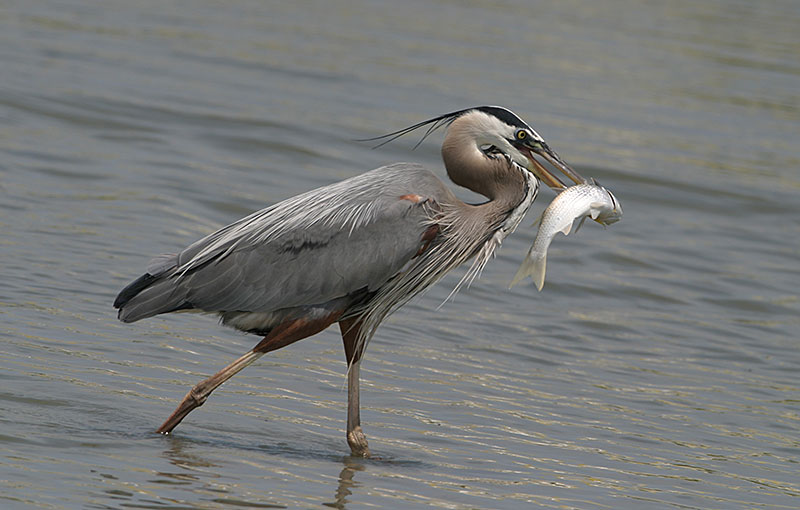
Here we will describe Herons you can see in the United States. These can be found in wetlands, swamps, marshes, rivers, and coastal areas. So, keep your eyes open and gain some knowledge.
In this guide, we will give in-depth information about different types of herons.
On this page
Great Blue Heron
(Ardea herodias)
Height 46 inches
The Great Blue Heron is the largest and most widespread of our native egrets and herons. They range across most of North and Central America as far north as Alaska with their wintering range reaching the northwestern South America. These birds are year-round residents across much of their range in the United States. Individuals breeding in the northern part of the range usually migrating southward.

Photo © Sam Crowe
Great Blue Herons have an overall bluish-gray plumage and a small reddish shoulder patch. The crown of the head is white. Plumes on head, neck and back give them a shaggy appearance. Their bill is yellow and black during the breeding season, more yellow in non-breeding plumage.
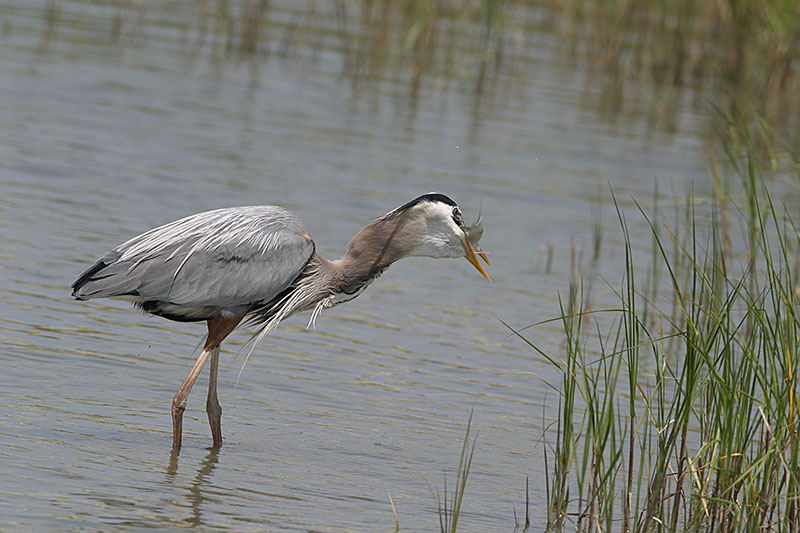
Photo © Sam Crowe
Great Blue Herons will eat almost anything they catch, including fish, frogs, snakes and baby birds. They either impale their prey with their bills or grab it between the mandibles, often shaking them before gobbling them down.
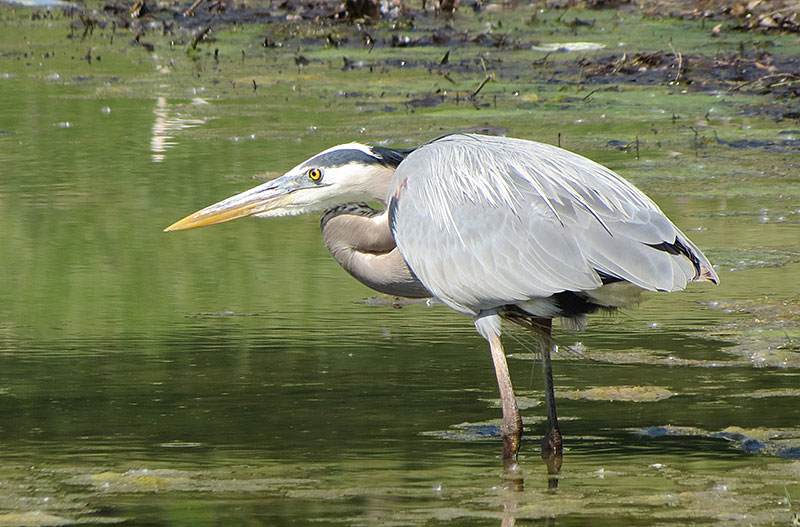
Great Blue Herons are solitary hunters. They tend to either stand still or stalk their prey by slowly wading in shallow water. You may also meet them foraging in grasslands, away from water.
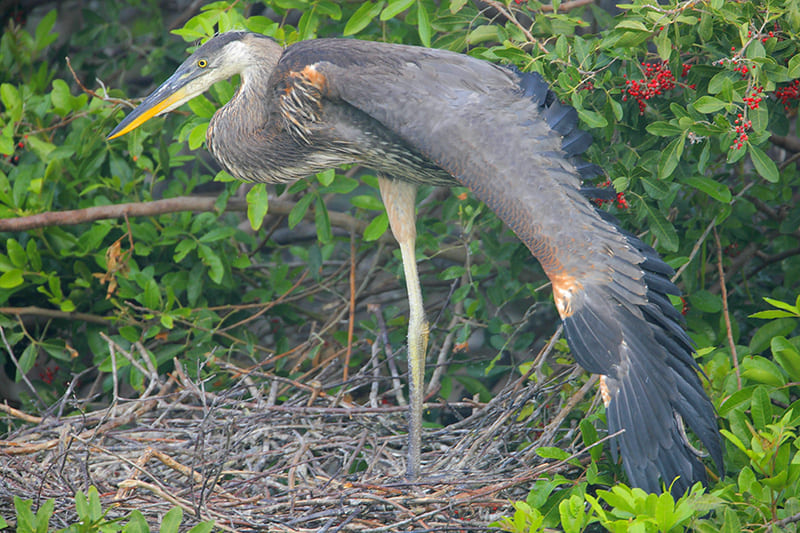
© Greg Lavaty
Juvenile Great Blue Herons have a solid dark head, with a dark upper bill and yellow lower bill. Their plumage is duller than that of the adults and they have a dark gray crown. They also lack the long plumes adults have.
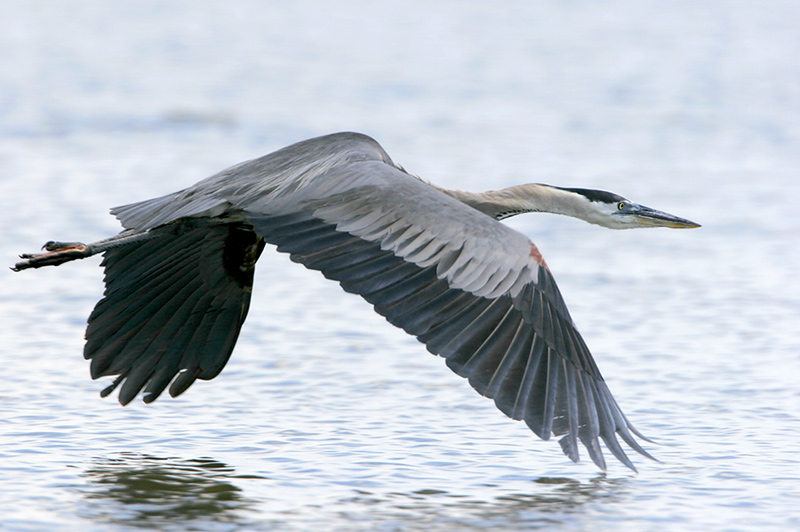
© Greg Lavaty
Great Blue Herons often give a prehistoric-sounding croak as they take off. Their wings are two-toned while spread out with most of it being grayish and the flight feathers being black. You can recognize them by their curled S-shaped neck, broad and rounded wings, long and trailing legs, and slow wingbeats.
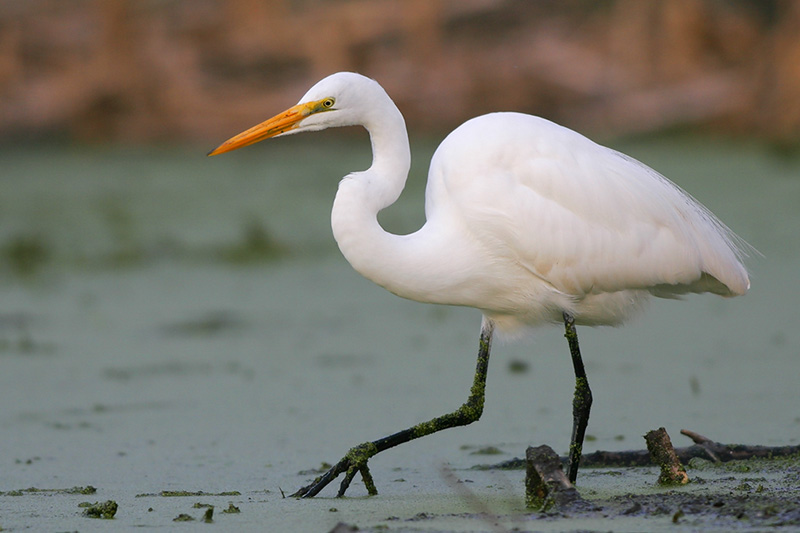
Photograph © Greg Lavaty.
A white morph is found in Florida. With its pure white plumage, it is very similar to the Great Egret (shown in the picture), but it has yellow legs instead of black legs.
Green Heron
(Butorides virescens)
Height 18 inches
At about 18 inches, the Green Heron is our smallest heron, falling on the other side of the size scale. They have resident populations in northern South America, parts of Central America, Florida and other coastal areas in the southern United States. Most of their breeding population resides in the eastern United States and migrates to Central America for the winter.
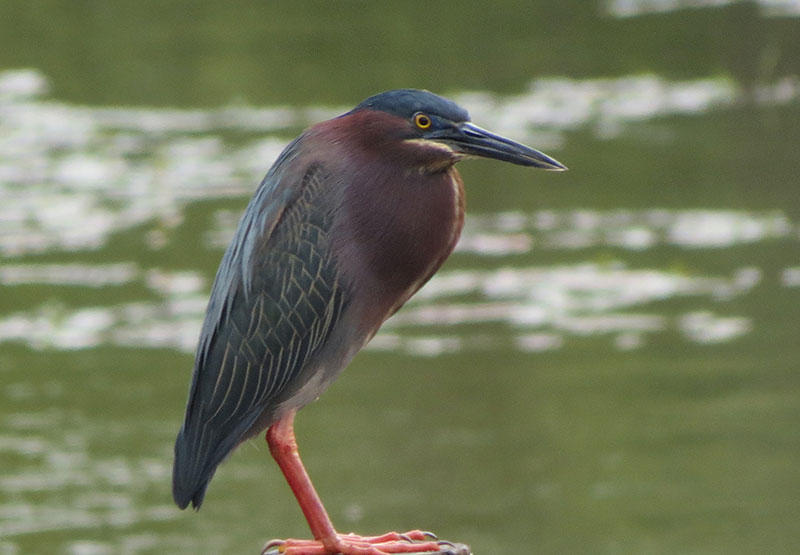
Photo © Sam Crowe
Green Herons look dark overall but in good lighting you can see that they have a green cap and back and a brown breast and neck. There are white streaks running down from the center of their necks. Legs of male Green Heron are red when in breeding plumage. Otherwise, legs of males and females are gray-green.
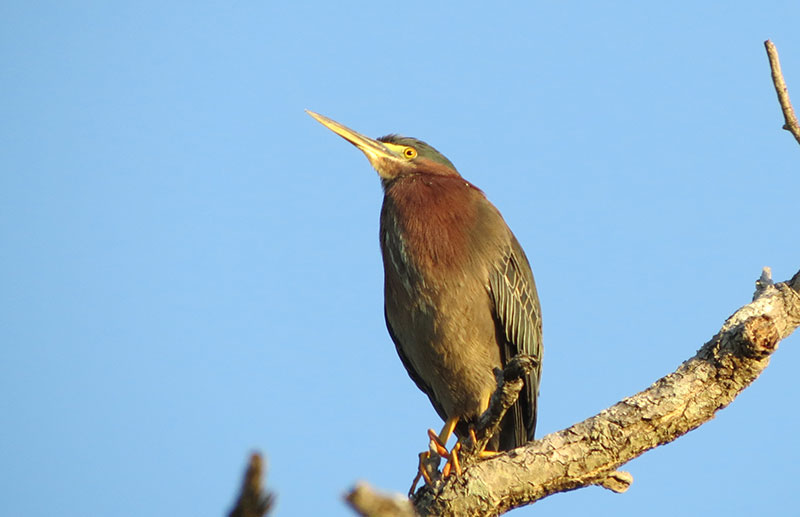
Photo © Sam Crowe
These small, chunky herons are wide-spread and usually found near wetlands. However, we often receive images of this species in backyards or in tree tops, if there is water nearby. They mainly forage for small fish by standing still near the water or wading in shallow water and then lunging for its prey and grasping it with its bill.
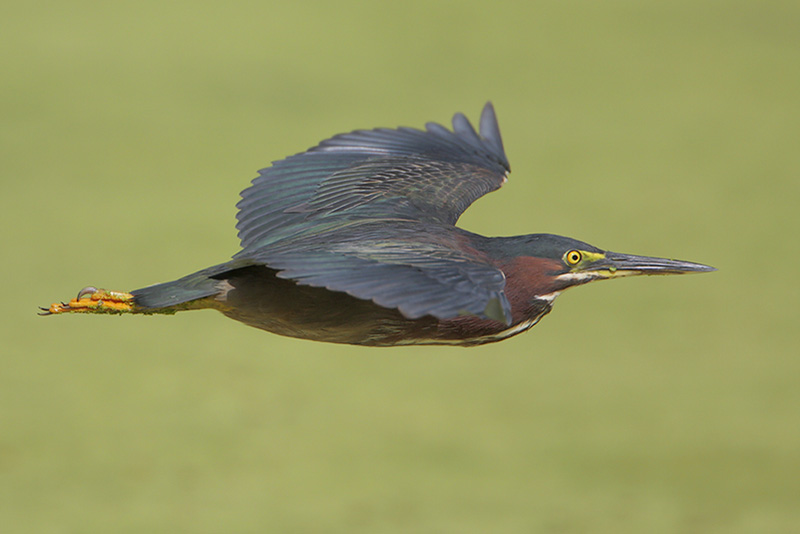
Photo © Greg Lavaty
In flight, they keep their neck tucked in. Their yellow feet barely extend behind tail.
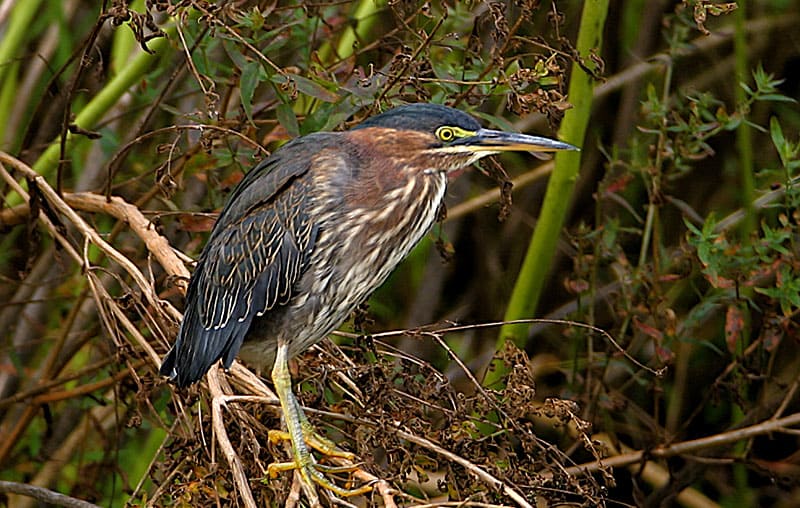
Photo © Sam Crowe
Juvenile Green Herons are browner and more heavily streaked on the chest and spotted on the back.
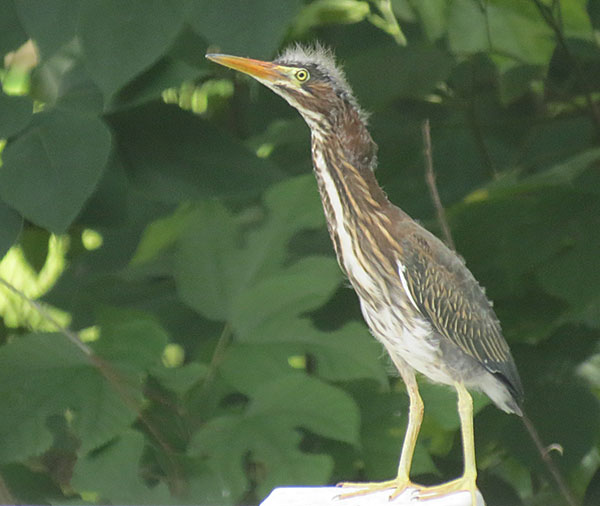
Photograph © Lita Morris
Reader Lita Morris sent in this photo of a very young Green Heron. Thank you Lita!
Little Blue Heron
(Egretta caerulea)
Height 24 inches
The Little Blue Heron ranges throughout the southeastern United States, parts of Central and the northern half of South America. In the United States, it is resident along the coastline and in Florida and the birds breeding further inland fly to Central America for the winter. This species inhabits both freshwater and marine environments from swamps, streams and mangrove forests to salt marshes, tidal flats, and estuaries.
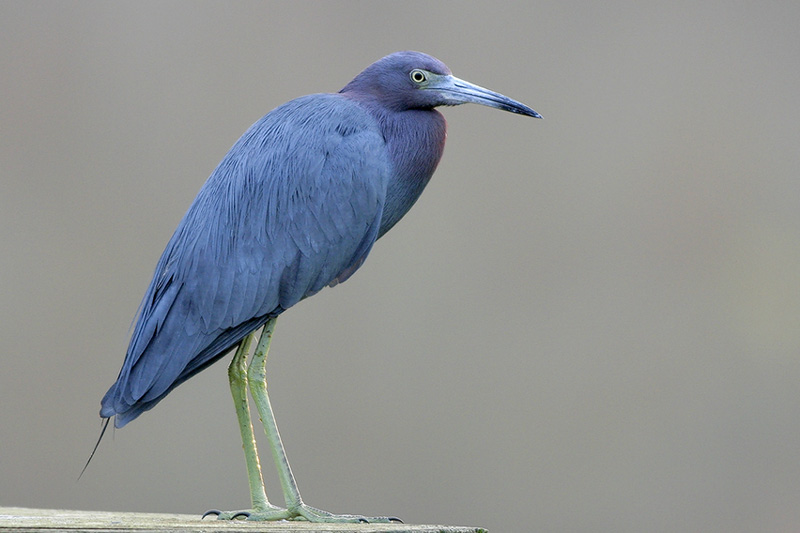
Photograph © Greg Lavaty
Juveniles are white, whereas adults have a dark plumage. In good light, adults are two-toned, with their bodies being slaty-blue and their heads and necks dark purplish-maroon. Their bills are gray and have a darker tip and their legs green. Head is shaggy in breeding plumage.
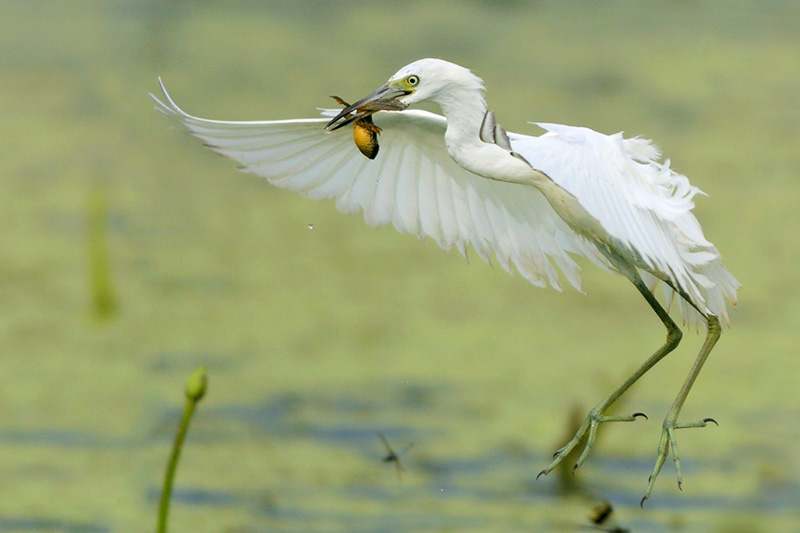
Photograph © Greg Lavaty
Juvenile Little Blue Herons are white with bright, green legs. You may easily mix them up with Snowy Egrets and the white morph of Reddish Egret since they may forage together in mixed flocks.
The easiest way to make sure it is a juvenile Little Blue Heron, not one of the other species is to look at its legs and bill. Snowy and Reddish Egrets have black legs, whereas juvenile Little Blue Herons have green legs. Its bill is bluish-gray with a black tip, whereas the Snowy Egret has a completely black bill, and the Reddish Egret has a pink base and a black tip.
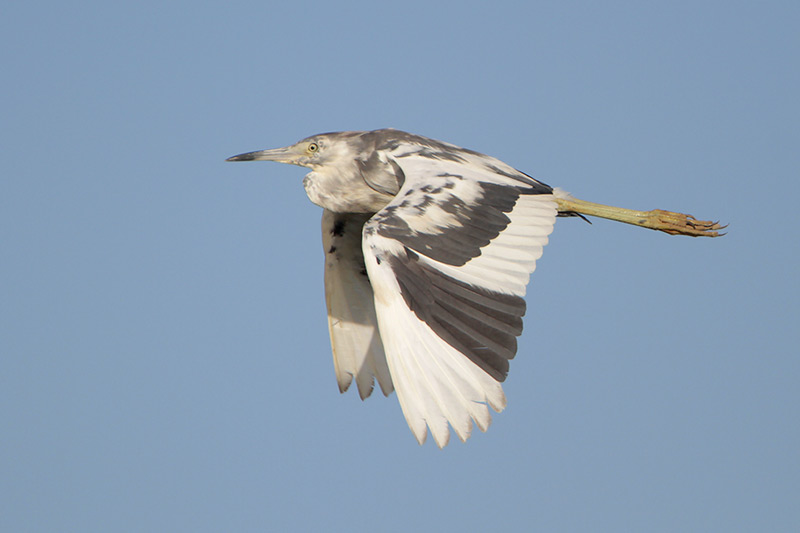
Photograph © Greg Lavaty
Juvenile Little Blue Herons also have dusky wingtips that are only visible in flight. This feature remains as they molt into adult plumage, although then identification becomes much easier anyway. That is because they have a pied appearance – a beautiful patchwork of slaty-blue and white.
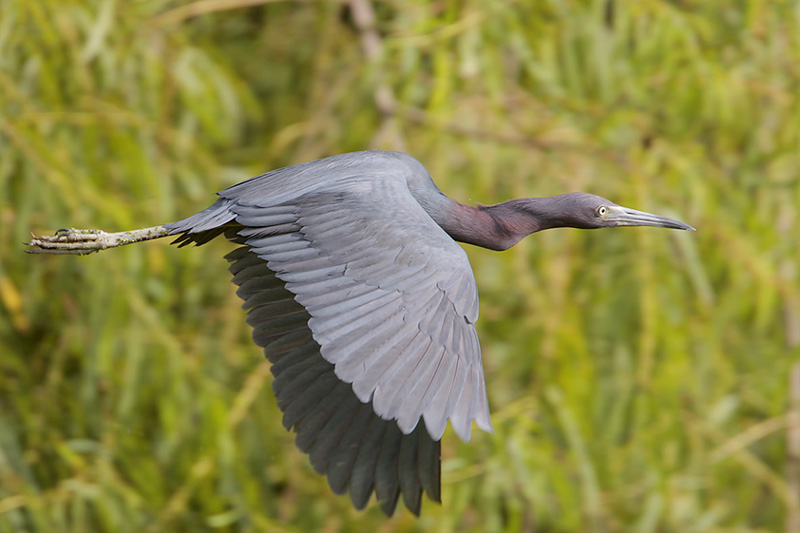
Photograph © Greg Lavaty
When it comes to foraging, they are amongst the quiet and patient predators. They either stand still and wait for their prey to come closer or walk very slowly and methodically to a different location.
In flight, feet extend well behind the tail and neck is tucked in.
Tricolored Heron
(Egretta tricolor)
Height 26 inches
Previously known as the Louisiana Heron, the Tricolored Heron‘s range is not that extensive. It is resident along the coast of northeastern United States, with its range extending into parts of Central and northernmost South America.
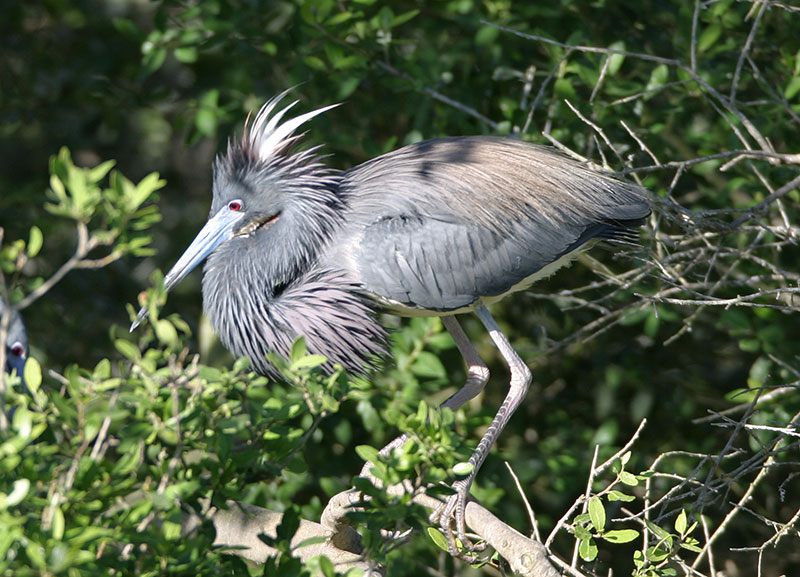
Photo © Sam Crowe
Adult Tricolored Herons are bluish-grayish above with a white belly and a white stripe on the underside of their necks. During the breeding season, their bills turn blue, their heads, necks, and backs become shaggy because of the white plumes growing out of there, and their legs turn pinkish.
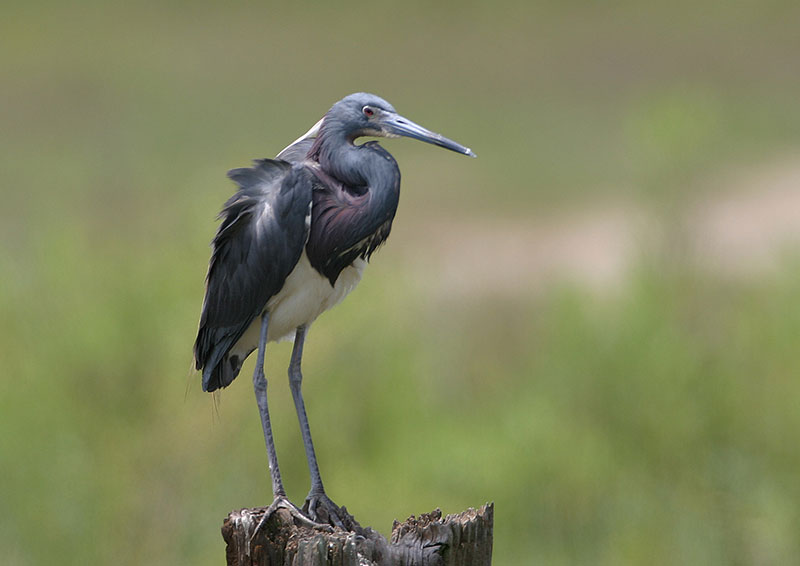
Photo © Sam Crowe
A pinkish/purple sheen can be seen on the neck feathers in good light. From afar or in poor lighting, this sheen is not visible and they just look dark slaty blue. They look rather similar to other dark-colored heron species, but can be identified thanks to their white belly and neck stripe.
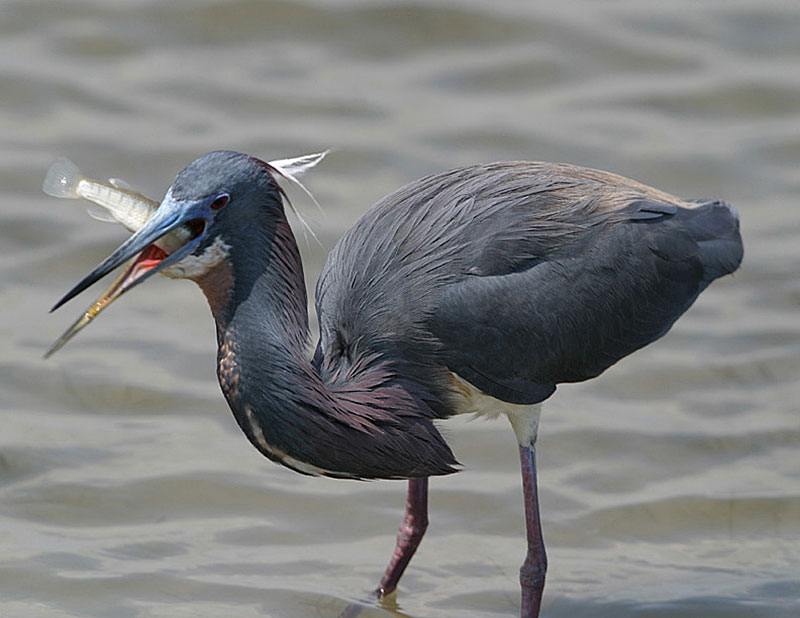
Photo © Sam Crowe
During the non-breeding season, their legs are yellowish. Their bills are two-toned – the upper mandible is black and the lower one yellow.
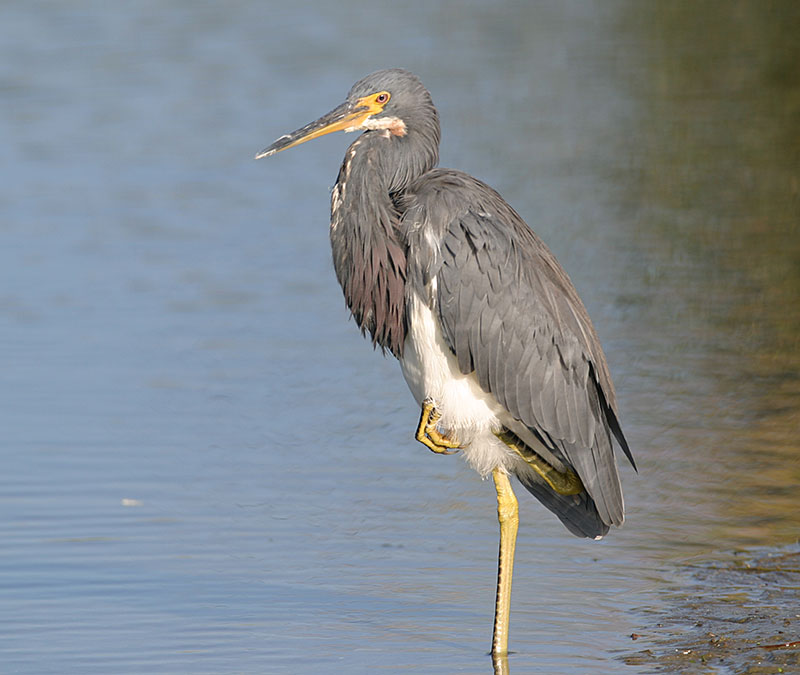
Photo © Sam Crowe
Juvenile Tricolored Herons look similar to adults with one notable difference – their neck is covered with rust-colored feathers and the color extends to the upper back and wings. You may confuse juveniles with Reddish Egrets but as with adults, remember to look out for the white belly and neck stripe.
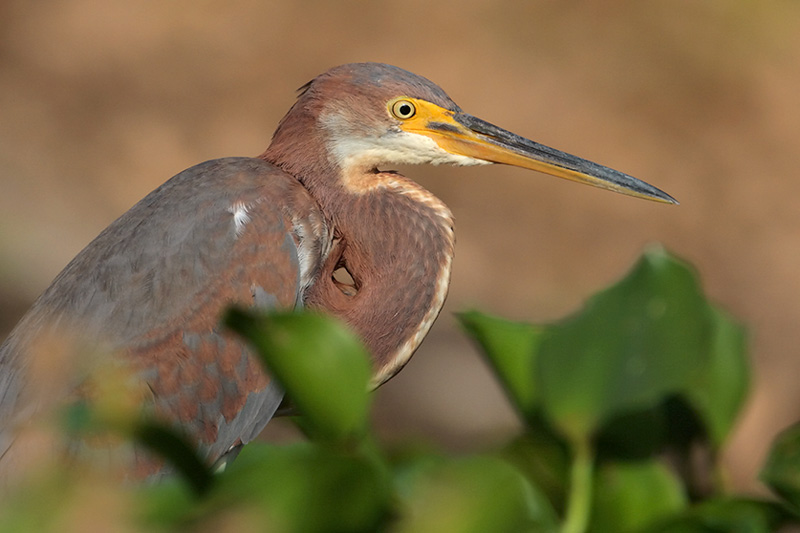
Photo © Greg Lavaty
Tricolored Herons have a similar body shape to other herons while flying. They keep their neck tucked in, they have long and broad wings, and their long legs trail behind them. The white on the belly extends well into the underwing but their tails and flight feathers are slaty-blue.
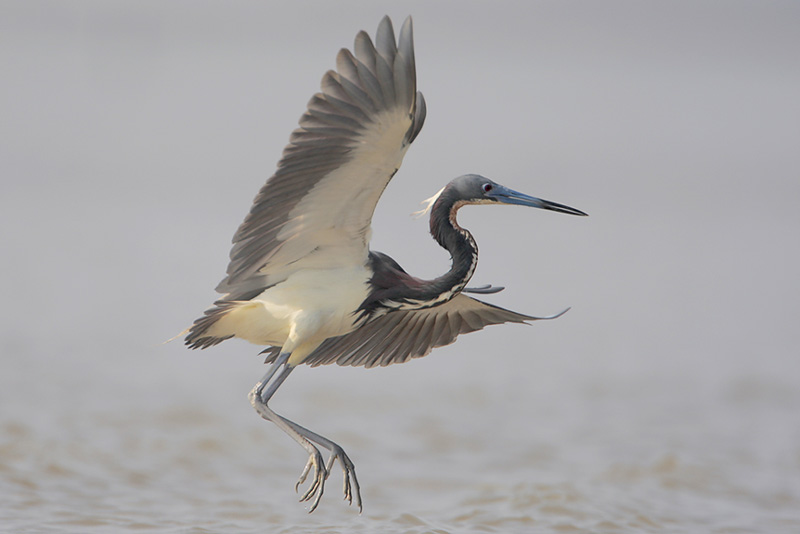
Photograph © Greg Lavaty
These solitary hunters can be quite active, especially compared to other herons. They disturb the bottom of the waterbody with their feet, stirring up debris and startling their prey. You may see them run after fish with wings spread to balance themselves and make sudden turns, following the direction of their next kill. However, that is not always the case and they may also wait patiently for their prey to approach them.
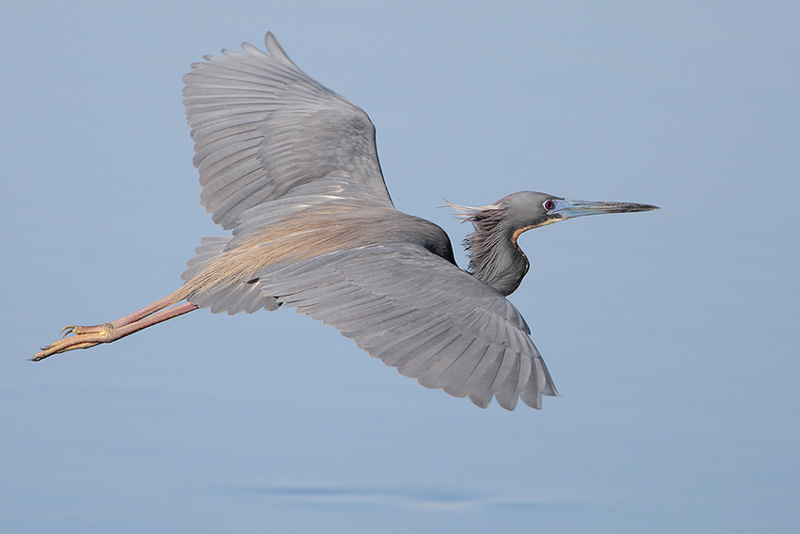
Photo © Greg Lavaty
Conclusion – Long story short
Great Blue Herons are the largest of the four heron species, characterized by their tall stature, blue-gray plumage, and long neck and bill.
Green Herons are the smallest of the four species and are identified by their dark greenish-blue back and wings, chestnut-colored neck, and distinctive crest on their head.
Little Blue Herons are slightly larger than Green Herons but smaller than Great Blue Herons. They have a bluish-gray body, a dark-tipped bill, and greenish legs.
Tricolored Herons are slightly larger than Little Blue Herons and have a distinctive blue-gray body with white stripes on their neck and chest. They also have a distinctive bill that is yellow with a black tip.
